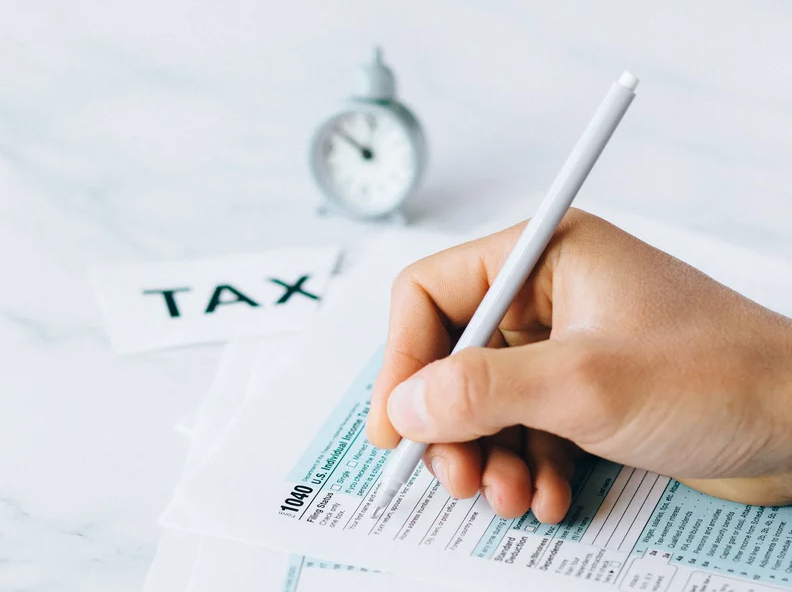Restricted stock awards (RSAs) and restricted stock units (RSUs) are two types of incentive programs that are common in startup companies. While similar, there are some key differences in how these benefits are delivered and taxed. Both require careful tax and investment planning to balance potential tax savings and investment risk.
What's the difference between RSAs and RSUs?
Restricted stock awards are grants of company stock, which typically vest over a period of four to five years. Until shares vest, they are subject to forfeiture. This could happen, for example, if the employee leaves the company or if certain performance benchmarks are not met.
Restricted stock units, on the other hand, are commitments to deliver stock (or, in some cases, its cash equivalent) to an employee after vesting conditions are satisfied. RSUs that have a single vesting condition, which is typically time in service to the company, are referred to as single-trigger RSUs. Double-trigger RSUs add a second vesting condition: a liquidity event. This could be an IPO, acquisition by a SPAC, or a direct public listing.
How are RSAs taxed?
An employee is normally taxed on shares of restricted stock as they vest over the course of several years. Their current fair market value at the time of vesting (minus any price paid for the shares) is taxed as regular income. Since this value tends to increase over time in a company that’s performing well, it can be expected that the tax rate paid over the course of the vesting schedule would also increase. When the employee sells shares, the event is treated as a capital gain or loss.
83(b) Election
RSA recipients have the option of paying tax on their restricted shares before they vest, as well. Section 83(b) of the Internal Revenue Code allows employees to report as income the fair market value of restricted shares at the time they elect this option rather than at the time the shares vest. Assuming the company does well, this option has the potential to save an RSA recipient a lot of money in taxes over the course of their vesting schedule.
On the other hand, if the stock loses value or the company goes under altogether, an 83(b) election would result in tax overpayment. In this case, it is not possible to get the overpayment back as a future deduction; it’s simply gone. For this reason, it’s important to carefully consider whether the potential tax savings justifies the risk involved in paying taxes on shares that you don’t yet own. An experienced investment advisor can help you assess the risk of this move and determine the best way to protect your financial interest.
How are RSUs taxed?
The fair market value of RSUs is taxable as ordinary income on the date that shares are actually transferred to the employee. When shares are sold, the difference in value is treated as capital gain or loss.
RSUs are included in wage income; as such, employers withhold taxes at the time of transfer. Often, however, wage withholding is insufficient to cover the tax liability associated with RSUs, requiring employees to either increase their withholding rates or send additional quarterly payments to the IRS. Unlike RSAs, RSUs are not eligible for 83(b) election.
Double-Trigger RSUs
Because double-trigger RSUs can vest all at once (at the time of liquidity), this can result in a significant bump in taxable income for a single tax year. This problem is compounded by the post-IPO lockup period, which commonly prohibits those holding pre-IPO shares from selling them for six months. Even after the lockup period expires, those who have access to material nonpublic information about a company are typically subjected to additional blackout periods and may only sell shares during open trading windows.
Without the ability to sell shares, meeting the tax liability associated with RSUs can be a challenge. A tax and financial planning professional who is experienced in the IPO process can help you plan for this event.
If you have received restricted stock or RSUs as part of your compensation, consult with a fiduciary advisor early in the process. By planning ahead, you can take a strategic approach that lets you make the most of this once-in-a-lifetime opportunity.
Disclaimer: This material is purely intended to be general and educational in nature, and should not be construed as specifically-tailored investment, financial planning, tax, legal, or other professional advice. Information and data contained herein is as-of the date of publication, and may be subject to change in the future without notice. Any investment performance referenced is purely past performance, which is no guarantee of any future performance. Nothing contained herein should be construed as an offer to sell, a solicitation of an offer to buy, or a recommendation of any security or other financial product or investment strategy. All investment, tax, and financial planning strategies involve risk that you should be prepared to bear. You are highly encouraged to consult with professionals of your choosing before taking any action based on this material.


